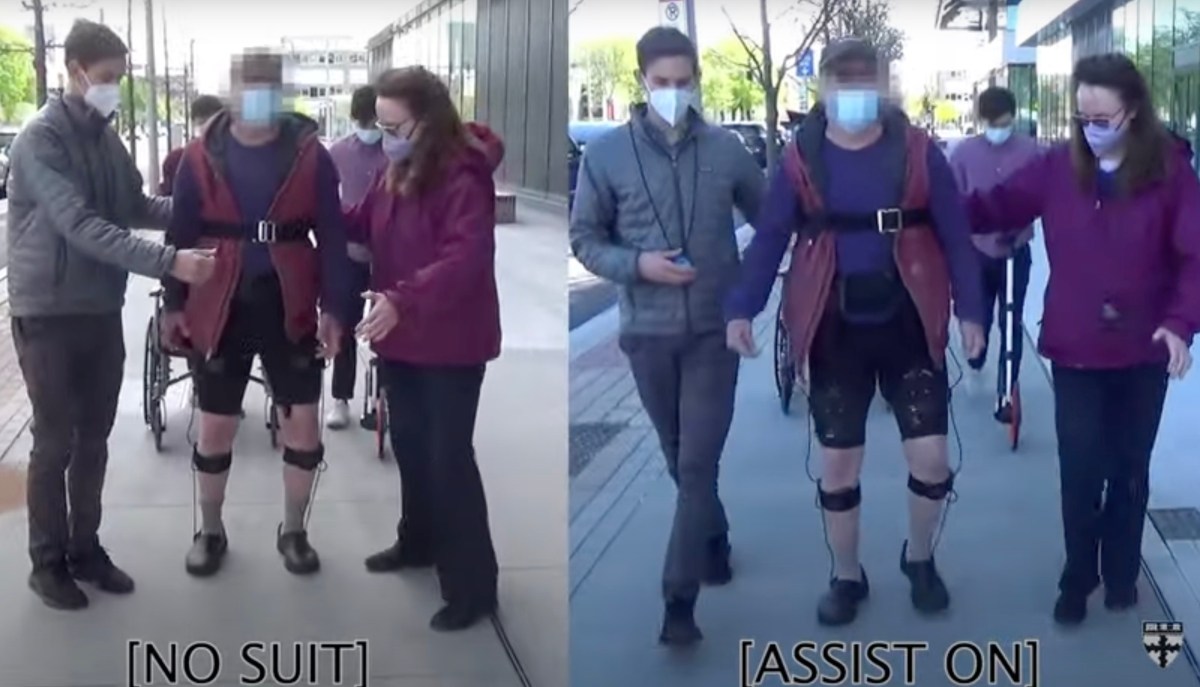It’s a design that can reduce pressure injuries compared to a rigid exoskeleton, since it seems to operate with straps attached to powered reels instead of metal. Those anchor points, however, still will very likely cause pressure injuries if worn too long. I also don’t think I would call something using fabric straps an “exoskeleton.”
Also, the man’s gait who’s using the suit is still FAR from something I’d call steady. He’d still need a walker.
The guy was walking like John Wayne… Ready to bust into any bar and send the slap down in!
Slowly getting closer to batman tech.
This is the best summary I could come up with:
The latter category is often the domain of soft robotic exoskeletons – those with fabric parts designed to be more of a day-to-day assistive accessory.
In the case of people with Parkinson’s disease, “freezing” is a frequent issue that impacts the ability to walk, while increasing the likelihood of falls.
There have been a number of attempts to tackle the issue, from medication to physical therapy to surgery, but existing solutions are limited in their efficacy.
New research from a joint team from Harvard and Boston University, published in Nature Medicine, demonstrates how soft robotic exoskeletons can address the issue.
“We found that just a small amount of mechanical assistance from our soft robotic apparel delivered instantaneous effects and consistently improved walking across a range of conditions for the individual in our study,” says Harvard professor, Conor Walsh.
The Biodesign Lab is the same group that designed an exosuit for stroke patients that was subsequently licensed by startup, ReWalk Robotics.
The original article contains 387 words, the summary contains 160 words. Saved 59%. I’m a bot and I’m open source!
Nice for Claudine to invent this on the way out




